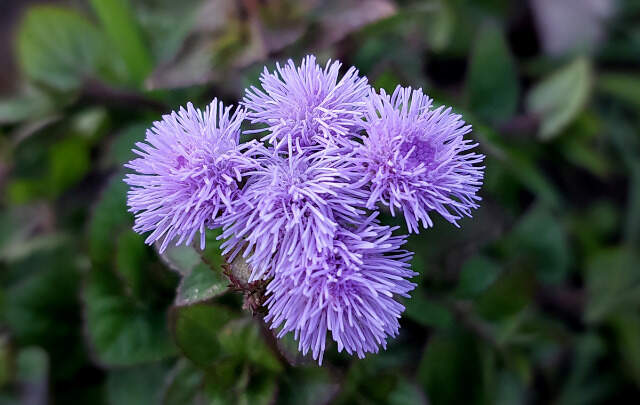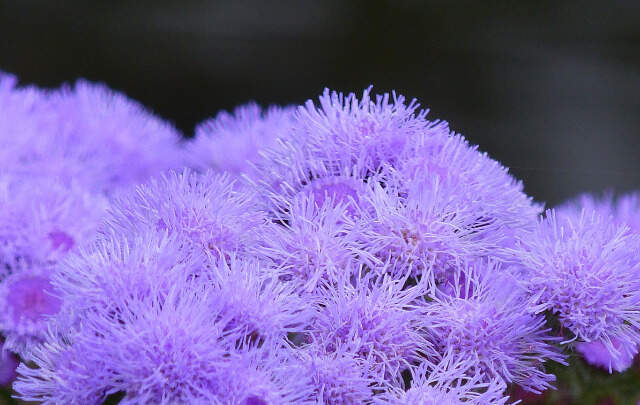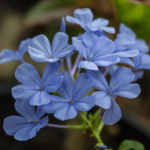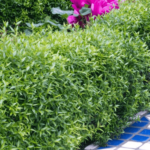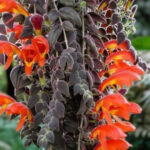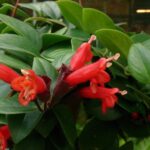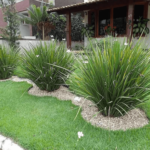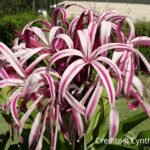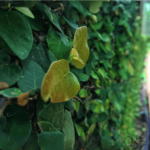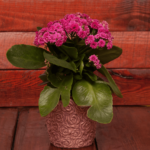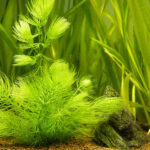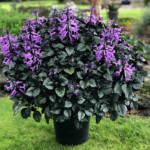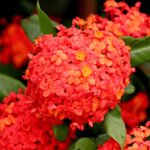Today we are going to talk about the Ageratum or Floss flower plant, whose scientific name is Ageratum, and the most famous species is Ageratum houstonianum, also known as Bluemink.
In this article, we will mainly focus on Ageratum houstonianum (pictured below), as this is by far the most cultivated species in this genus.
One of the great differentials of this plant is its blue flowers, a color not easily found in plants, making it a great addition to your garden.
Additionally, as you will see in this article:
- Ageratum is easy to cultivate;
- It can be planted in various different locations;
- It is used in bouquets and floral arrangements.
Liked it? Then keep reading this article to learn even more about this plant that has been catching the attention of many cultivators.
Decorative Use of Ageratum
Ageratum is known for its beautiful and fuzzy flowers, which, along with its vibrant colors, create a charming velvety texture in the garden.
Thanks to this characteristic, this plant becomes a popular choice for garden beds, where its flowers can stand out.
In addition to flower beds, Ageratum is versatile enough to be successfully grown in pots, offering an additional option to integrate this beauty into smaller spaces or even specific areas of the garden.
Ageratum can also be found in vases with water or in floral arrangements.
How to Care
Ageratum is an easy-to-cultivate plant that is usually grown from seeds or seedlings.
As its natural habitat is warmer regions, it is ideal to grow it in places where the temperature is higher.
Here are some tips for cultivating it.
Location and Lighting
Ageratum should be grown in a location with partial shade or direct sunlight.
If you live in very hot environments, growing it where it receives protection from direct sunlight during the hottest parts of the day is ideal.
Now, if you live in very cold environments, growing it in direct sunlight is the best option.
Suitable Soil
As it is planted directly in the ground, the soil should have plenty of organic matter and good drainage.
Soils prone to waterlogging can hinder the plant’s development.
How to Water
Like ferns, cacti, bonsai, and virtually all plants you can cultivate, the watering frequency can vary based on various factors.
- Temperature
- Humidity
- Ventilation
- Soil the plant is cultivated in
- Among various other factors
Therefore, there is no rule about how often you should water your ageratum.
The ideal is to do the following:
Keep the soil consistently moist, but avoid waterlogging.
Temperature
As mentioned earlier, this is a plant that prefers warm weather.
However, it can also be grown in cooler areas, as long as it is protected against frost.
It is ideal to offer temperatures between 20 to 25 °C (68 to 77 °F) for this plant, and it can tolerate slightly higher or lower temperatures.
How to Fertilize
Ageratum can be fertilized with liquid fertilizers or organic compounds.
Both options will help in the development and flowering of your plant; just be careful not to overdo the amount.
How to Plant and Multiply
Reproduction of ageratum through seeds or seedlings can be done during winter or early spring.
Seeds should be planted in soil with a lot of organic material, protected from extreme temperatures, especially frost.
You can also fertilize the soil with organic material or chemical fertilizer (NPK 4-14-8).
Regarding seedlings, you can buy them or generate them from seeds as described above. And to plant them in the ground, follow the steps below:
- Choose a well-lit location with fertile, well-drained soil enriched with organic matter.
- Dig holes in the soil, each the size of the ageratum seedling’s clod.
- Place each seedling carefully in the holes, ensuring that the top of the root ball is level with the soil.
- Fill the holes around the seedlings with the removed soil, pressing gently to secure the soil around the roots.
- After planting, water abundantly to ensure proper hydration of the seedlings.
- If you are planting ageratum to compose borders, position the seedlings to allow taller plants to grow behind them.
Now that you have learned to cultivate this plant, keep reading to understand its flowering, characteristics, and medicinal properties.
Characteristics
Ageratum is native to Mexico, Central America, and some South American countries, and can be found especially in warmer regions.
With about 60 cataloged species, the genus Ageratum belongs to the family Asteraceae, and its only species normally cultivated for decorative purposes is Ageratum Houstonianum.
Below are some more detailed information about this plant:
- Height: typically ranges from 30 to 70 cm (11,8 to 27,5 inches) but can reach up to 90 cm (35,4 inches).
- Leaves: have an oval shape and serrated edges, making them look delicate.
- Flowers: the first flowers appear in late spring to early summer, they have a funnel shape and can be of various colors ranging from lilac and violet to blue and white. Moreover, they help attract butterflies and bees to your garden.
In addition to these characteristics, Ageratum has developed a defense against insects by producing a compound that hinders the functions of insects, thus preventing many of them from reproducing.
Species and Varieties:
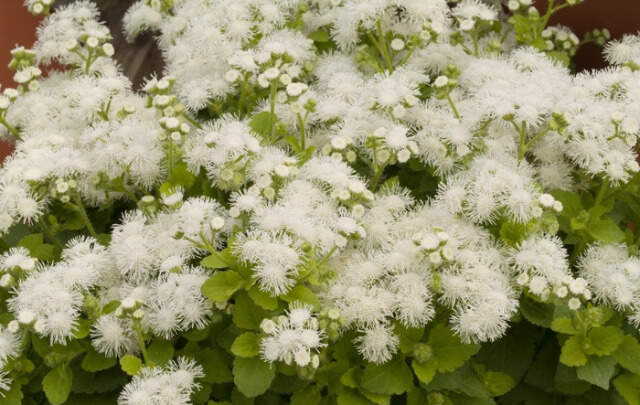
In addition to being the most famous species of the genus, Ageratum Houstonianum also has some varieties that are worth highlighting in this text:
- Ageratum Houstonianum ‘Hawaii White’ – white flowers
- Ageratum Houstonianum ‘Hawaii Blue’ – blue flowers
- Ageratum Houstonianum ‘Blue Danube’ – a smaller variety with blue or purple flowers
These are just a few of the many varieties that this species has.
In addition to this species, the genus Ageratum has more than 60 species. Below are some that stand out:
- Ageratum conyzoides
- Ageratum fastigiatum
- Ageratum maritimum
- Ageratum littorale
Medicinal Properties
Popularly known as Mentrasto, the species Ageratum conyzoides is used in medicine for various purposes:
In folk medicine, it is widely used as an insecticide, purgative, antipyretic, anti-inflammatory, analgesic, anesthetic, treatment for ulcers, hemorrhage, and mental disorders. After the inclusion of the plant in the list of Central Medicines, and subsequent verification of its analgesic and anti-inflammatory effectiveness, its use has increased, as well as other investigations of its use through laboratory research.
Source: https://www.sbpmed.org.br/
Another common question is whether Ageratum conyzoides can be poisonous. Below is the answer I found in a document from the Federal University of Campina Grande.
It is a Medicinal plant indicated as: anti-rheumatic, antidiarrheal, anti-inflammatory, tonic, useful against colds. The whole plant is used. It only presents toxicity when ingested in large quantities (BARRACA, 1999).
Source: dspace.sti.ufcg.edu.br
As for the most famous ageratum (Ageratum houstonianum), it is considered poisonous to grazing animals, causing liver damage.
Conclusion
Ageratum houstonianum is a very interesting plant to grow in your garden, especially due to the color of its flowers.
Undoubtedly, this easy-to-cultivate plant will bring a unique touch to your plant collection, and it is a great option for any cultivator.
Liked this text? Then leave a comment below telling a bit about your history with this plant, and also share it on your social networks.
Until next time!


